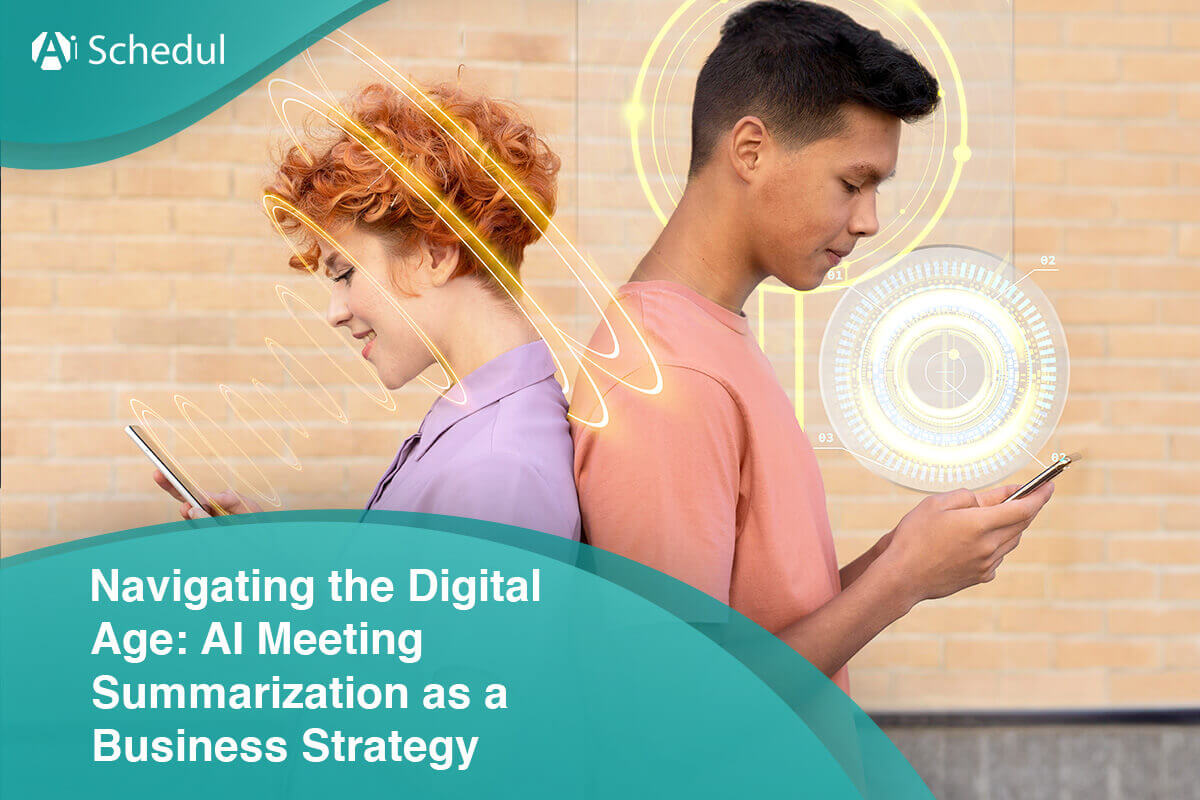In today’s rapidly evolving digital landscape, businesses are continually seeking innovative ways to streamline their operations and boost productivity. The emergence of Artificial Intelligence (AI) has ushered in a new era of possibilities, revolutionizing the way companies handle various tasks.
One such application that holds immense potential is AI meeting summarization—a technology that not only saves time but also enhances collaboration and decision-making.
In this article, we delve into the realm of AI meeting summarization as a robust business strategy, exploring its benefits, implementation challenges, and the human touch that sets it apart.
The Power of AI Meeting Summarization
Meetings have long been both a cornerstone and a pain point in the corporate world. While they facilitate discussions and decision-making, they often consume a significant portion of employees’ time. Here lies the beauty of AI meeting summary tools.
By harnessing the capabilities of natural language processing and machine learning, AI systems can sift through the troves of audio or text data generated during meetings and distill them into concise, coherent summaries.
The benefits are far-reaching. Firstly, time savings are substantial. Employees no longer need to spend hours rehashing meeting content; they can quickly peruse a well-structured summary. Secondly, the accessibility of summarized content enhances collaboration.
Team members who might have missed a meeting can catch up swiftly, ensuring everyone remains on the same page. Lastly, the ability to extract key insights from meetings expedites decision-making, driving agility and responsiveness within the organization.
Implementation Challenges in the Real World

While the promises of AI meeting summarization are enticing, implementation isn’t without its challenges. One significant hurdle is the quality of summarization. Language is nuanced, and conversations can be intricate, laden with context-specific references.
Ensuring that AI systems capture these subtleties accurately requires constant refinement. A balance must be struck between automated algorithms and human intervention to guarantee the quality of summaries.
Adding to this complexity is the paramount concern of data privacy and security. Meetings invariably encompass discussions of sensitive information that demand safeguarding. The prospect of transmitting audio or transcripts to external AI systems raises valid apprehensions.
In light of this, businesses are compelled to opt for solutions that extend robust encryption measures and prioritize on-premises processing, thereby assuaging potential risks and fortifying the confidentiality of their deliberations.
The Human Touch: Redefining AI’s Role
In a world where AI’s influence is expanding across industries, the human touch remains invaluable, particularly in nuanced tasks like meeting summarization. While AI can handle the bulk of data processing, human oversight is essential to refine and contextualize the generated summaries.
Human intervention serves multiple purposes. Firstly, it ensures that summaries accurately capture the underlying intent of discussions.
Contextual cues, humor, and non-verbal communication can elude AI algorithms, but a human can adeptly bridge these gaps. Secondly, human reviewers can curate summaries to align with the company’s culture and communication style. This personalized touch adds an element of authenticity that resonates better with employees.
Implementing AI Meeting Summarization: A Step-by-Step Approach
Integrating AI meeting summarization into a business strategy requires a well-thought-out approach:
Assessment of Needs: Understand the pain points in the current meeting processes. Identify areas where time and efficiency could be improved.
Technology Evaluation: Research and select AI meeting summarization tools that align with your security and privacy requirements. Look for options that offer customization and human-AI collaboration features.
Pilot Phase: Begin with a pilot phase involving a select number of meetings and participants. This helps fine-tune the AI system according to the organization’s specific context.
Human Training: Train human reviewers to work alongside the AI system. Provide guidelines for context preservation, style, and confidentiality.
Iterative Refinement: Continuously refine the AI system based on feedback from both AI-generated and human-reviewed summaries.
Scaling Up: Gradually expand the use of AI meeting summarization across various departments. Encourage feedback loops for ongoing enhancement.
Surpassing Expectations: AI’s Astounding Journey to Business Dominance
The exponential growth of Artificial Intelligence and its transformative impact on the business world have been nothing short of astonishing. Initially viewed as a futuristic concept, AI has swiftly transcended expectations and emerged as a powerful force reshaping business landscapes.
Its swift ascent has been marked by a series of groundbreaking tools that have left the world astonished. From intelligent virtual assistants that streamline customer interactions to predictive analytics that forecast market trends with unprecedented accuracy, AI’s unexpected prowess has disrupted traditional paradigms and catalyzed innovation across industries.
The journey from skepticism to widespread integration has not only captivated business leaders but also ushered in an era where AI’s capabilities continue to expand, reshaping the boundaries of what was once deemed possible.
The Transformative Influence of AI Across Diverse Business Landscapes
AI’s remarkable versatility has bestowed transformative advantages upon businesses of diverse natures. In the realm of product selling, AI-driven recommendation engines have revolutionized customer experiences by analyzing user preferences and behavior, enabling personalized product suggestions that drive sales and enhance customer satisfaction.
When it comes to web design, AI algorithms analyze user interaction patterns to optimize website layouts, enhancing user engagement and navigation. This technology ensures that each website is tailored to its target audience, leading to higher conversion rates and prolonged user visits.
In the marketing arena, AI’s impact is profound. AI-enabled analytics dissect vast amounts of consumer data to identify trends and preferences, empowering marketers to craft more targeted and effective campaigns.
In the SaaS sector, AI augments efficiency and innovation. AI-powered automation simplifies complex workflows, allowing SaaS providers to deliver a seamless user experience. Predictive analytics assist in foreseeing potential glitches, minimizing downtime and enhancing overall service reliability.
Moreover, AI-driven natural language processing has transformed customer feedback analysis. Businesses can now extract valuable insights from customer reviews, enhancing their products and services based on real-time feedback.
From healthcare to finance, entertainment to education, AI’s reach is boundless. By harnessing its capabilities, businesses gain a competitive edge, driving growth, improving customer experiences, and expanding the horizons of what’s achievable across an array of industries.
Conclusion
The digital age has ushered in a transformative era, replete with opportunities for businesses to innovate and optimize their operations. AI meeting summarization stands as a testament to the remarkable capabilities of technology.
By embracing this tool not as a replacement, but as a facilitator of human collaboration, organizations can harness its power to streamline workflows, elevate decision-making, and foster a culture of efficiency. The synthesis of technology and human acumen promises not only improved bottom lines but also a more connected, productive, and engaged workforce—truly a testament to the potential of AI in reshaping the future of work.
The synthesis of technology and human acumen promises not only improved bottom lines but also a more connected, productive, and engaged workforce—truly a testament to the potential of AI in reshaping the future of work.



